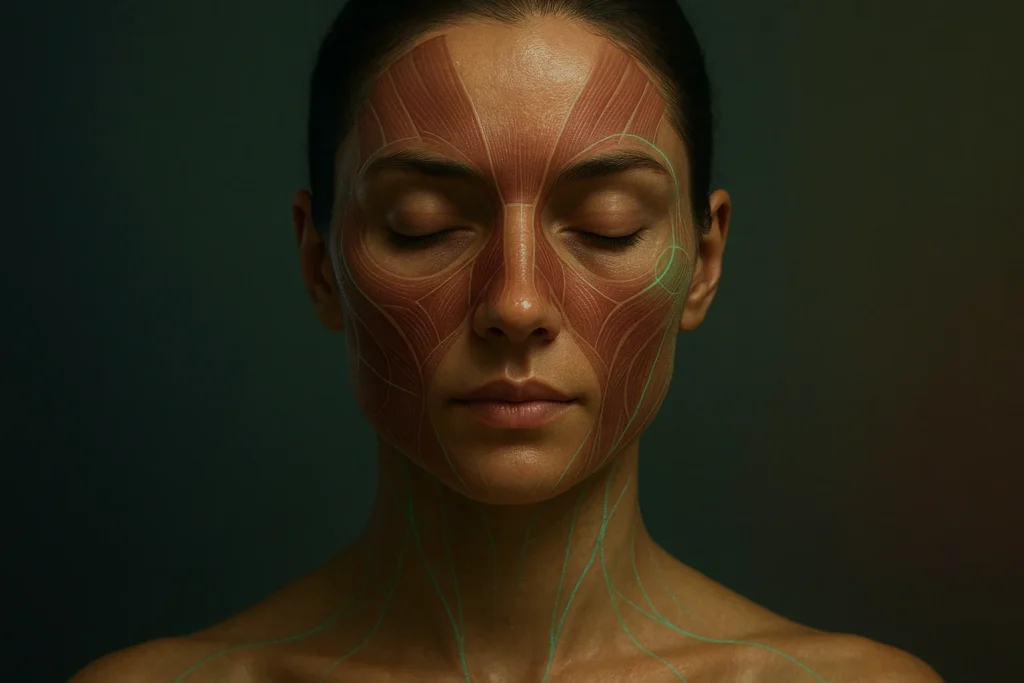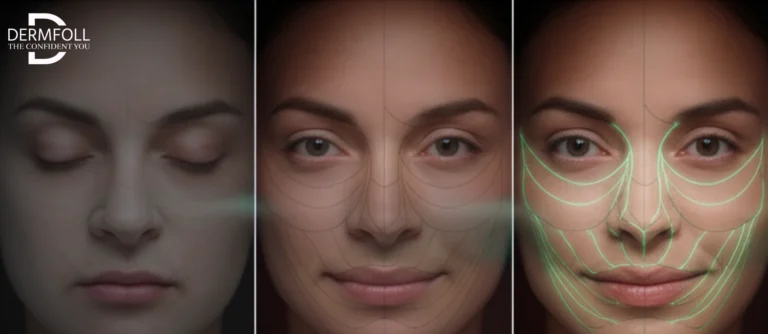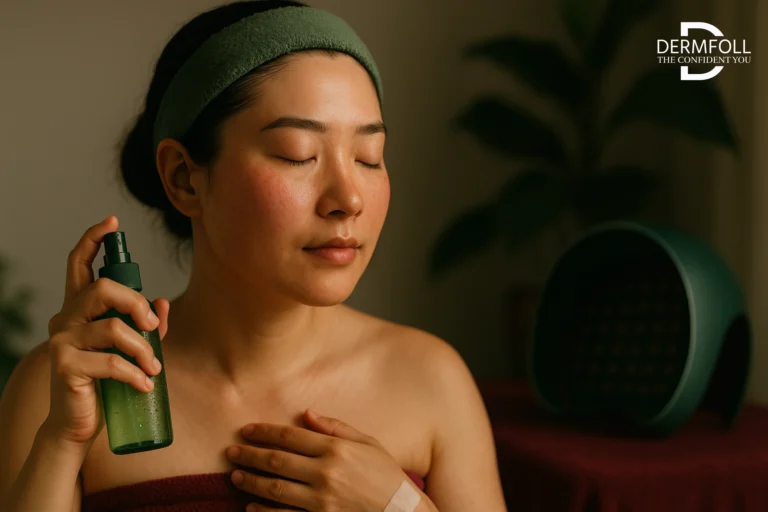Understanding the Architecture of the Face: A Layered System
Let’s take a moment to talk about something that doesn’t always get enough credit: the actual structure of your face.
Now, I know, talking about facial anatomy might sound a little clinical at first.
But trust me, once you understand what’s really going on beneath the surface, it all starts to make a lot more sense.
Especially when we’re exploring treatments like a microcurrent stimulator or any kind of facial electrical treatment.
🔶 Lift and Sculpt from the SMAS Up
AMIRO GlowBooster Microcurrent LED Facial Device
Targets SMAS layer to tone muscles and boost cellular ATP regeneration.
CHOUOHC THE MORPHO Anti-Aging Beauty Device
Dual RF and EMS pulses firm contours and enhance microcirculation.
The Five Key Layers of the Face and Neck
Think of your face like a beautifully layered cake, every slice has distinct layers that work together. And each of those layers plays a role in how your face looks, moves, and ages.
Here’s a quick breakdown:
Skin: This is the top layer, the part you can see in the mirror. The epidermis is the outermost layer that shields you from stress from the outside world.
The dermis is the inner layer that gives your skin structure, holds blood vessels, and keeps things flexible.
Subcutaneous fat is the layer of fat that lies just below the skin. It makes your face look fuller and softer. It helps preserve that aesthetic fullness.
SMAS (Superficial Musculoaponeurotic System): It’s a long name, and it’s vital. This is a fibrous-muscle layer that supports everything and keeps them up. It’s actually the layer most involved in facial expressions.
Areolar Tissue: This one’s more of a space, loose connective tissue that allows the upper layers to move naturally over the deeper ones.
Periosteum: This is the deep inner layer, sitting right on the bone. It helps anchor everything above it.
Once you see your face like this – layer by layer, it becomes easier to understand why certain treatments work the way they do.
Why Layer Depth Matters in Cosmetic Technology
Here’s where it gets a bit technical, but I promise, it’s the good kind. When we talk about things like facial electrical treatment or microcurrent devices, the layer they’re targeting makes all the difference in your results.
For instance:
A cream? That mostly stays in the upper skin layer.
A laser or RF? That goes deeper, often to the dermis or even subcutaneous fat.
And microcurrent stimulation? That’s where it gets interesting.
These devices can reach down to the SMAS, giving you lifting and toning effects in a non-invasive way.
So yes, depth matters. The deeper the device can go, safely, of course, the more dramatic and lasting the outcome can be.
🔶 Energize Deep Layers, Strengthen Surface Structure
AMIRO GlowBooster Microcurrent LED Facial Device
Bioelectric microcurrents reawaken facial muscles and improve long-term elasticity.
CHOUOHC THE MORPHO Anti-Aging Beauty Device
Electroporation and RF warmth amplify serum absorption and dermal repair.
Targeting the SMAS: The Structural Engine Behind Facial Contour
Now, let’s talk about the SMAS, because it’s kind of the unsung hero here.
You know how some treatments claim to lift your face without surgery? The reason they can even attempt that is because they’re tapping into this fibromuscular layer.
The scaffolding that keeps everything where it should be. And when the SMAS gets a gentle nudge, like from a microcurrent stimulator, it can help tone and tighten the face naturally.
It’s also a big reason why people rave about the benefits of microcurrent facial sessions.
Because by stimulating the SMAS, we’re not just smoothing the surface, we’re waking up the muscles and tissues that support everything.
Microcurrent Technology: How It Engages the Skin at Every Depth
Alright, let’s get into the techy side. If you’ve ever wondered how these little devices that deliver a low-level electrical current can make such a big difference, you’re not alone.
Whether you’re eyeing your first microcurrent stimulator or just curious about the real science behind those tightening facials, it all starts at the cellular level.
Microcurrent Basics: Bioelectricity and ATP Production
Your body already uses a tiny bit of electricity to function – your cells communicate with it!
Facial electrical treatment like Microcurrent gently boost that natural signal, which makes your skin act younger.
This stimulation makes ATP (adenosine triphosphate) levels go up.
ATP is a type of fuel for cells. ATP is needed for cell repair, regeneration, and yes, collagen formation. So when your skin gets that extra burst of ATP, it can:
- Repair itself faster
- Produce more collagen and elastin
- Look more toned, firm, and glowing
So when people enthuse about the benefits of microcurrent facial treatments, that’s usually what they’re seeing: more energy in the cells, greater skin function, and a fresher, more lifted face.

Which Layers Are Stimulated by Microcurrent?
One thing that makes microcurrent so effective and different is that it may go deeper than the surface. We’re not just talking about exfoliating the top layer like a scrub would.
Microcurrent devices can stimulate:
- The dermis, where collagen and elastin live
- The subcutaneous tissue, where fat and connective tissues help sculpt your face
- And significantly, the SMAS layer: yes, the same layer targeted in surgical facelifts
By reaching this depth, microcurrent can really assist tone facial muscles, increase circulation, and support structural lift – all without a needle or knife.
Comparing At-Home Devices with Professional-Grade Penetration
I am asked all the time: “Are at-home microcurrent tools actually worth it?”
Here’s how I prefer to describe it:
Professional-grade microcurrent treatments (the kind you’d get in a clinic) tend to use higher-intensity currents that can penetrate deeper layers and produce faster effects.
At-home devices, on the other hand, are developed with safety in mind. They use milder currents, which means outcomes might be more gradual, but they’re still beneficial if you’re consistent.
Think of it like going to the gym with a personal trainer versus following a YouTube workout. Both work, you just need to know what you’re signing up for.
So if you’re exploring the benefits of microcurrent facial treatments, you’re on the right track. Whether you’re using a dermatology-grade machine or your own facial electrical treatment device at home.
🔶 Multi-Tech Precision for Every Facial Layer
AMIRO GlowBooster Microcurrent LED Facial Device
Gentle squarewave microcurrent lifts, tones, and supports the SMAS foundation.
CHOUOHC THE MORPHO Anti-Aging Device
RF, LED, and EMS synergize to rejuvenate skin from surface to depth.
CONCLUSION
So now you’ve got a clearer picture of what’s really happening beneath your skin, and why that matters.
We explored how the face is built from the top down, layer by layer, and why treatments that don’t go deeper than the surface often fall short.
From the epidermis to the SMAS, every layer has a purpose, and when you target the right ones, you get better, longer-lasting results.
We also took a closer look at how a microcurrent stimulator works its magic.
A well-designed facial electrical treatment reaches into the deeper layers where change really happens.
It supports muscle tone, improves circulation, and helps generate ATP, giving you some of the most consistent and natural-looking benefits of microcurrent facial therapy when used regularly.
But we’re just getting started.
In the next part of our series, we’ll dive into the muscles behind your expressions and explore whether it’s really possible to “train” your face. (Spoiler: it kind of is.)
We’ll also look at how microcurrent works around fat pads and facial volume, plus what it can and can’t do compared to fillers or surgical lifts.











